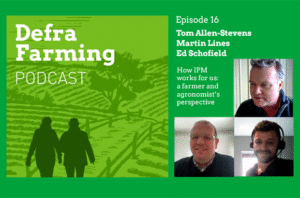
Agricultural Marketing market research direct to consumer sales A detailed and vibrant illustration depicting agricultural marketing. The scene shows a bustling farmers market with various stalls 1.webp.webp
Definition: Agricultural Marketing
Overview
Agricultural marketing refers to the activities, processes, and institutions involved in moving agricultural products from the farm to the consumer. This includes the planning, organizing, directing, and handling of agricultural produce in such a way as to satisfy farmers, intermediaries, and consumers. Agricultural marketing encompasses a range of activities, including market research, pricing, promotion, distribution, and sales, aimed at ensuring that agricultural products reach the market efficiently and profitably.
Benefits of Effective Agricultural Marketing
Increased Revenue
Effective agricultural marketing strategies can lead to higher sales and increased revenue for farmers and producers. By identifying target markets, setting competitive prices, and promoting products effectively, producers can maximize their profitability.
Fall off the barn roof and busted your keister? Life on the farm or ranch can be tough on the bum. Need a break? Laugh it off at FarmerCowboy.com, the #1 farm humor site. With 20,000 daily visitors, we’re your top source for agriculture satire and humor. Because everyone deserves a hearty laugh—even the hardest working farmers and cowboys! Join us and turn those long days into fun tales at FarmerCowboy.com.
Market Expansion
Agricultural marketing helps farmers reach new and broader markets. Through various marketing channels, such as direct-to-consumer sales, farmers’ markets, online platforms, and export opportunities, producers can expand their customer base and increase market presence.
Consumer Satisfaction
By understanding and meeting consumer preferences and demands, agricultural marketing ensures that consumers have access to high-quality, fresh, and diverse agricultural products. This leads to higher customer satisfaction and loyalty.
Components of Agricultural Marketing
Market Research
Market research involves gathering and analyzing data about consumers, competitors, and market trends. This information helps farmers and producers understand the needs and preferences of their target market, identify opportunities, and make informed marketing decisions.
Pricing Strategy
Pricing strategy is crucial for balancing competitiveness and profitability. Factors to consider include production costs, market demand, competitor prices, and perceived value of the product. Dynamic pricing strategies can help producers adjust prices based on market conditions.
Promotion and Advertising
Promotion and advertising are key to raising awareness and generating interest in agricultural products. Effective promotional activities include social media marketing, print advertisements, participation in trade shows and agricultural fairs, and public relations efforts.
Distribution Channels
Distribution channels are the pathways through which agricultural products reach consumers. Common channels include direct sales (farmers’ markets, CSA programs), wholesalers, retailers, and online platforms. Efficient distribution ensures timely delivery and maintains product quality.
Techniques for Successful Agricultural Marketing
Direct-to-Consumer Marketing
Direct-to-consumer marketing involves selling products directly to consumers without intermediaries. This can be done through farmers’ markets, on-farm sales, CSA programs, and online stores. Direct marketing allows farmers to retain more profit and build strong customer relationships.
Value-Added Products
Creating value-added products, such as organic produce, artisanal foods, or processed goods, can attract niche markets and command higher prices. Value-added products differentiate offerings and cater to specific consumer preferences.
Branding and Packaging
Developing a strong brand and attractive packaging helps products stand out in the marketplace. A clear and appealing brand identity, combined with informative and visually appealing packaging, enhances product appeal and consumer trust.
Economic Considerations
Cost of Marketing
Marketing activities involve costs such as advertising, packaging, market research, and promotional materials. While these expenses can be significant, they are necessary investments for reaching and attracting customers. Effective budgeting and cost management are essential for maximizing the return on marketing investments.
Return on Investment
Conducting a cost-benefit analysis helps farmers assess the return on investment for marketing efforts. This analysis should consider factors such as increased sales, market expansion, brand recognition, and customer loyalty. Tracking and measuring marketing performance can guide future strategies and improve outcomes.
Environmental Impact
Sustainable Marketing Practices
Sustainable marketing practices promote environmentally friendly and ethically produced products. Highlighting sustainable farming practices, such as organic production, animal welfare, and eco-friendly packaging, can attract environmentally conscious consumers and enhance brand reputation.
Reducing Carbon Footprint
Adopting marketing strategies that reduce the carbon footprint, such as local marketing and minimizing transportation, contributes to environmental sustainability. Encouraging local consumption and supporting community-based marketing initiatives can also strengthen local economies.
Case Studies
Case Study 1: Organic Produce Marketing
An organic farm in California implemented a comprehensive marketing strategy that included social media campaigns, participation in local farmers’ markets, and collaboration with local restaurants. By emphasizing their organic and sustainable farming practices, the farm attracted a loyal customer base and increased their sales revenue by 40%.
Case Study 2: Exporting Specialty Grains
A grain producer in Kansas explored international markets for their specialty grains. By conducting market research and attending international trade shows, they identified demand in European markets. The farm established export relationships and saw a significant increase in revenue from international sales.
Conclusion
Agricultural marketing is essential for ensuring that agricultural products reach consumers efficiently and profitably. By employing effective marketing strategies, conducting thorough market research, and building strong brands, farmers and producers can successfully promote and sell their products. Understanding the components, techniques, and benefits of agricultural marketing allows producers to make informed decisions and achieve greater success in the marketplace. As consumer preferences and market dynamics continue to evolve, staying adaptable and innovative in marketing approaches will remain crucial for long-term success.

Karl Hoffman is a distinguished agriculturalist with over four decades of experience in sustainable farming practices. He holds a Ph.D. in Agronomy from Cornell University and has made significant contributions as a professor at Iowa State University. Hoffman’s groundbreaking research on integrated pest management and soil health has revolutionized modern agriculture. As a respected farm journalist, his column “Field Notes with Karl Hoffman” and his blog “The Modern Farmer” provide insightful, practical advice to a global audience. Hoffman’s work with the USDA and the United Nations FAO has enhanced food security worldwide. His awards include the USDA’s Distinguished Service Award and the World Food Prize, reflecting his profound impact on agriculture and sustainability.



